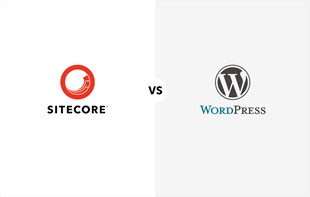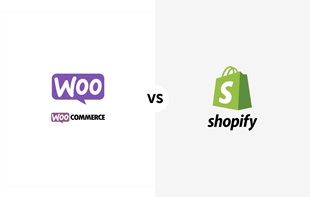How Can eCommerce Maturity Models Improve Sales?
With competitors and marketing campaigns on every corner, the world of eCommerce is a huge. In fact, eCommerce sales this year alone are expected to account for 13.7% of retail sales worldwide, and are set to rise to 17.5% by 2021. With ever-changing ways users find products, it’s important to keep up-to-date to compete for those conversions. Whilst your eCommerce platform might be doing well, there’s always the opportunity to improve. The question is: how?
This is where a marketing maturity model can help. The model is a rubric, or a ladder of progression that determines which stage your business sits within a strategic area. It’s a great tool to help you advance your eCommerce site from one stage to another, keep things relevant and engaging for your consumers, and satisfy high expectations to create a seamless user experience.
How Can Online Retail Marketers Assess Their Current Performance Level?
Using a marketing maturity model, you’ll be able to assess your current performance level and determine a clear growth plan for the road forward. It’s essential to evolve your marketing knowledge and skillset alongside business growth, making it extremely important to establish your current level to determine which actions to take next. There are three things to think about in this regard:
- What are you trying to achieve with your business and customer objectives?
- What are your current capabilities compared to what is available in the market?
- How do your capabilities fit to the market?
With this in mind, let’s take a look at the different stages of marketing maturity your business might fall into:
Stage 1
At the first stage, you’re someone who wants to grow your online presence and are concentrating on building brand awareness and driving site traffic with basic customer knowledge. You’ll be focussed on essential marketing strategies and utilising simple email marketing techniques. The types of communication at this stage are typically considered “batch and blast” because they aren’t personalised and are sent to everyone on your mailing list.
If your eCommerce business is at this stage, consider looking into working with an eCommerce agency like Appnova. Whilst you might have the tools to do everything yourself, if you choose the right creative eCommerce agency to become your digital partner, you can focus on what you know best: your products and your target audience.
Stage 2
Stage two is characterised by someone who has utilised multichannel marketing and can manage two or more channels. It’s for thinking of ways to better engage your current users and entice prospective customer, and where you begin to incorporate insight-driven offers. You’ll be looking away from manual marketing and testing automated marketing alongside behavioural based targeting to utilise each channel’s audience as best as you can.
Stage 3
By stage 3, you’re far more connected to your audience than ever before. Using integrated marketing tools, you’ll also be utilising omnichannel commerce like a data mine to capture data, track conversions, and target messaging to create more one-on-one personalised experiences.
Generation Z users rely more on product recommendations and seeing ads on social media than others, and by 2020, Generation Z consumers will command 40% of all consumer shopping. Grab these users’ attentions and utilise your marketing content to hit the target and get those conversions.
Stage 4
In this fourth and final stage, you have perfected all other areas of the marketing maturity model and continue to maintain a streamlined online experience. Through thorough data merging and productive analytics, you are fully engaged with every user using on a personal level and targeting on a large scale. Alongside this, you are monitoring evolving trends whilst updating your site accordingly to stay relevant.
How can eCommerce Maturity Models Help Improve Sales?
The eCommerce market is continuously changing to keep up with user demands and maintain conversion rates. If you use a maturity model, you will be able to gain a better understanding of where you situate within the market, and make the necessary updates to improve your eCommerce site and sales. Here are some of the benefits of adopting an eCommerce maturity model:
- Find opportunities for growth – An eCommerce capability model is great for gaining insights into your current eCommerce marketing abilities. It provides a clear view of any gaps in your current strategy, suggests improvements, and paves the way for a growth plan to optimise your site traffic, outreach, and revenue.
- Gain a stable structure – Finding the right ways to mature your marketing is key to competing with everyone else. With A/B testing and other data analysis, you can create a strong core strategy that works well with your users and encourages returning customers.
- Keep up-to-date – As your eCommerce site matures, so do the ways users connect to your site. A maturity model will allow you to stay on top of this and keep track of user behaviour. For example, voice shopping is on the rise, and by 2020 it’s rel="noopener noreferrer" suggested that 30% of web browsing sessions will be done without a screen. Ensure you are utilising your keywords to cater for future browsing preferences and monitor your omnichannel sites to keep with social and data trends for conversions.
Takeaways
If you want to ensure your business is maximising on its capabilities, it’s a great idea to use an eCommerce maturity model to determine where your business currently stands and find any opportunities to grow and advance your marketing maturity. Using a maturity model will also improve your sales by:
- Showing you where your business currently stands and the goals you want to reach to compete with the market
- Improving your current performance and creating opportunities to learn and grow
- Staying up-to-date with user trends and using them to get sales
- Enhancing your eCommerce for a seamless user experience
Subscribe To Us







.jpg?mw=310)
























































































.jpg?mw=310)




















![10 latest trends in digital marketing for beauty brands [Part.2]](/-/media/Appnova/Blog/ScreenShot20151026at1500471940x567/10-latest-trends-in-digital-marketing-for-beauty-brands-Part-2.jpg?mw=310)
![10 latest trends in beauty web design and digital marketing [Part.1]](/-/media/Appnova/BannerImages/18376519151_bbeaa6dafc_b-1/trends-in-beauty-web-design-and-digital-marketing/10-latest-trends-in-beauty-web-design-and-digital-marketing-Part1.jpg?mw=310)
![From story-telling to story-showing: What makes a lifestyle eCommerce? [Part.2]](/-/media/Appnova/BannerImages/ScreenShot20150929at143416/From-story-telling-to-story-showing-What-makes-a-lifestyle-eCommerce-Part-2.jpg?mw=310)











![The generation of me, myself and I – Me-commerce will remain strong. [Infographic]](/-/media/Appnova/BannerImages/mecommerce-cover/mecommerce-cover/The-generation-of-me-myself-and-I--Mecommerce-will-remain-strong.jpg?mw=310)
![A Whole New E-commerce World – Alibaba and the forty others [Infographic]](/-/media/Appnova/BannerImages/camel/camel/A-Whole-New-E-commerce-World-Alibaba-and-the-forty-others.jpg?mw=310)







0.Comments